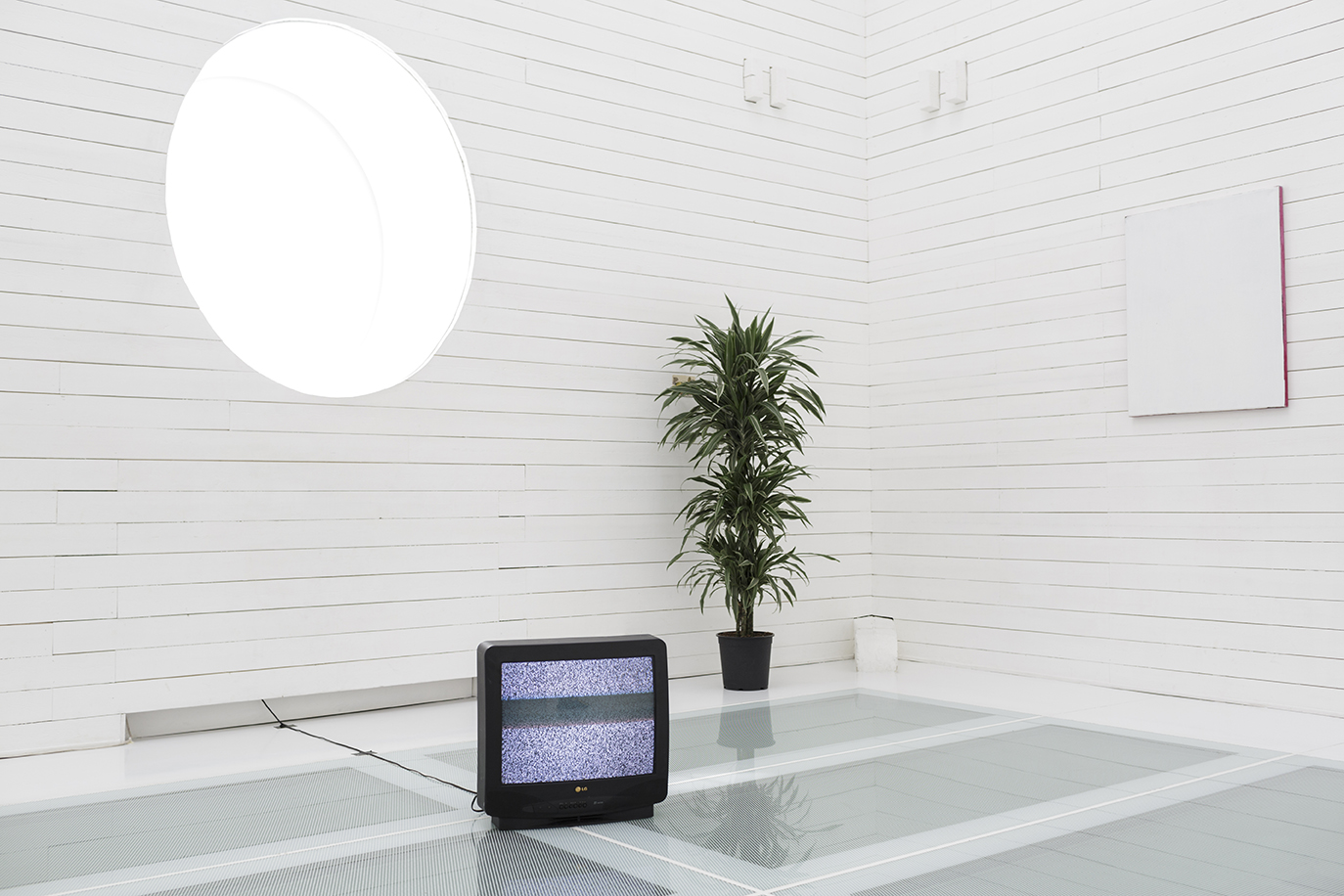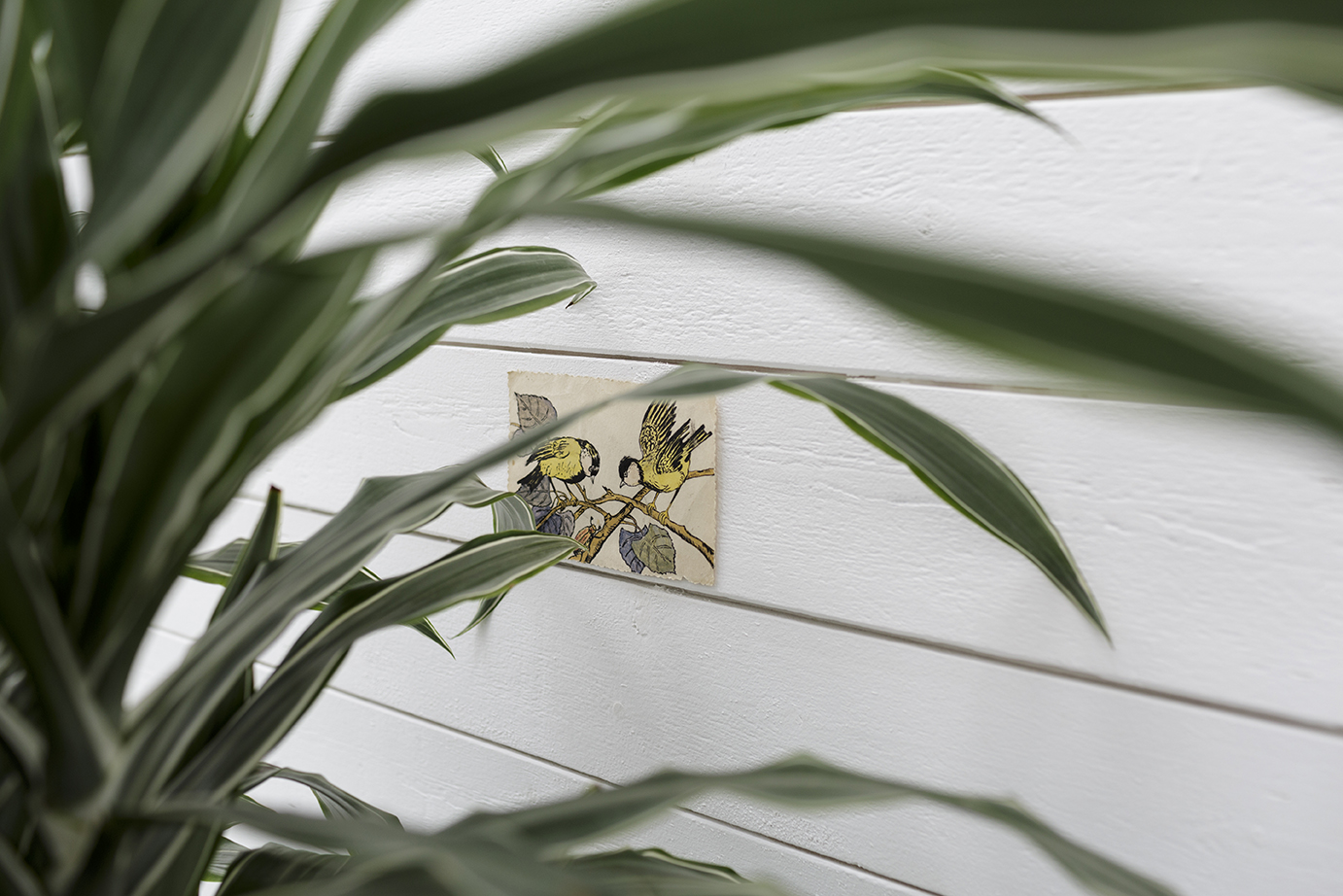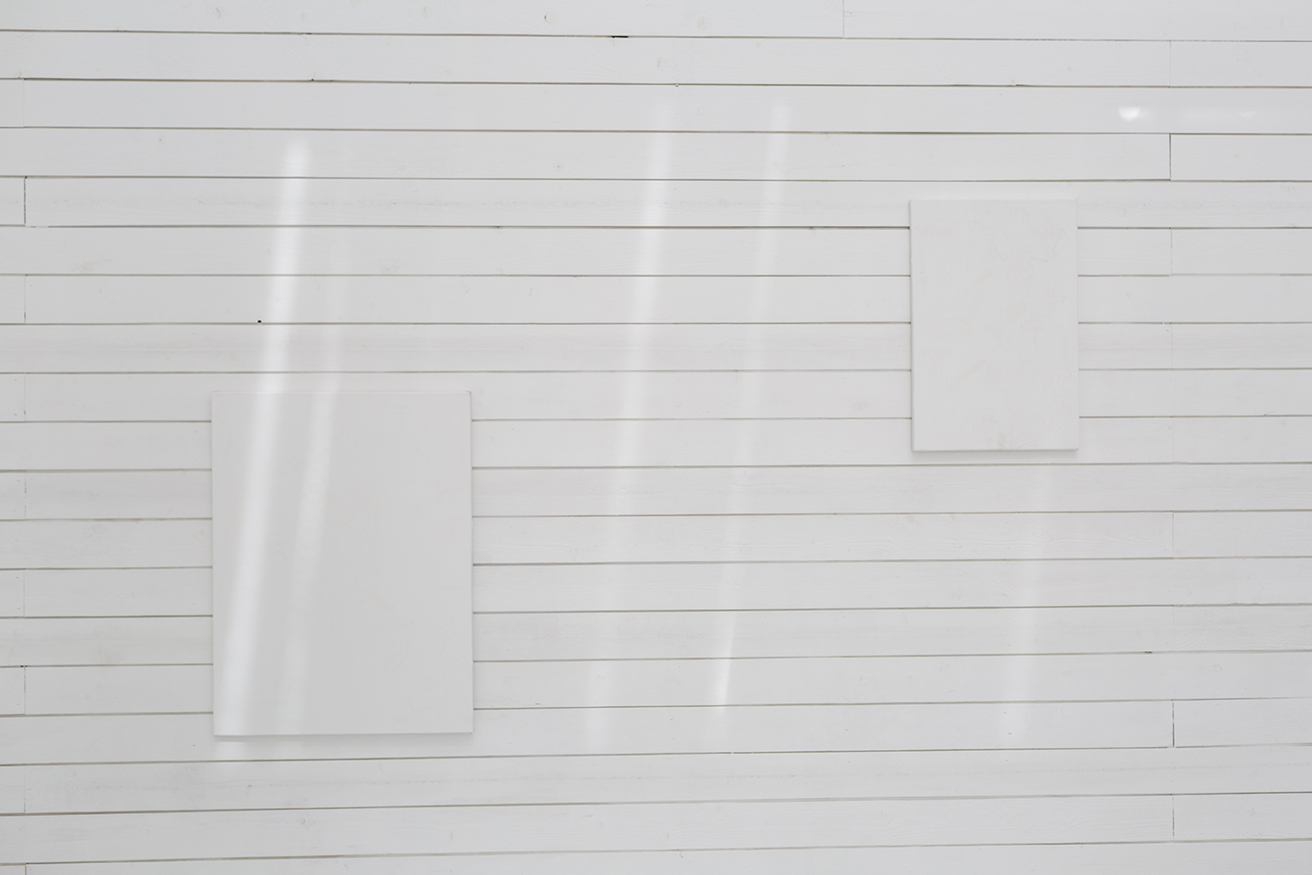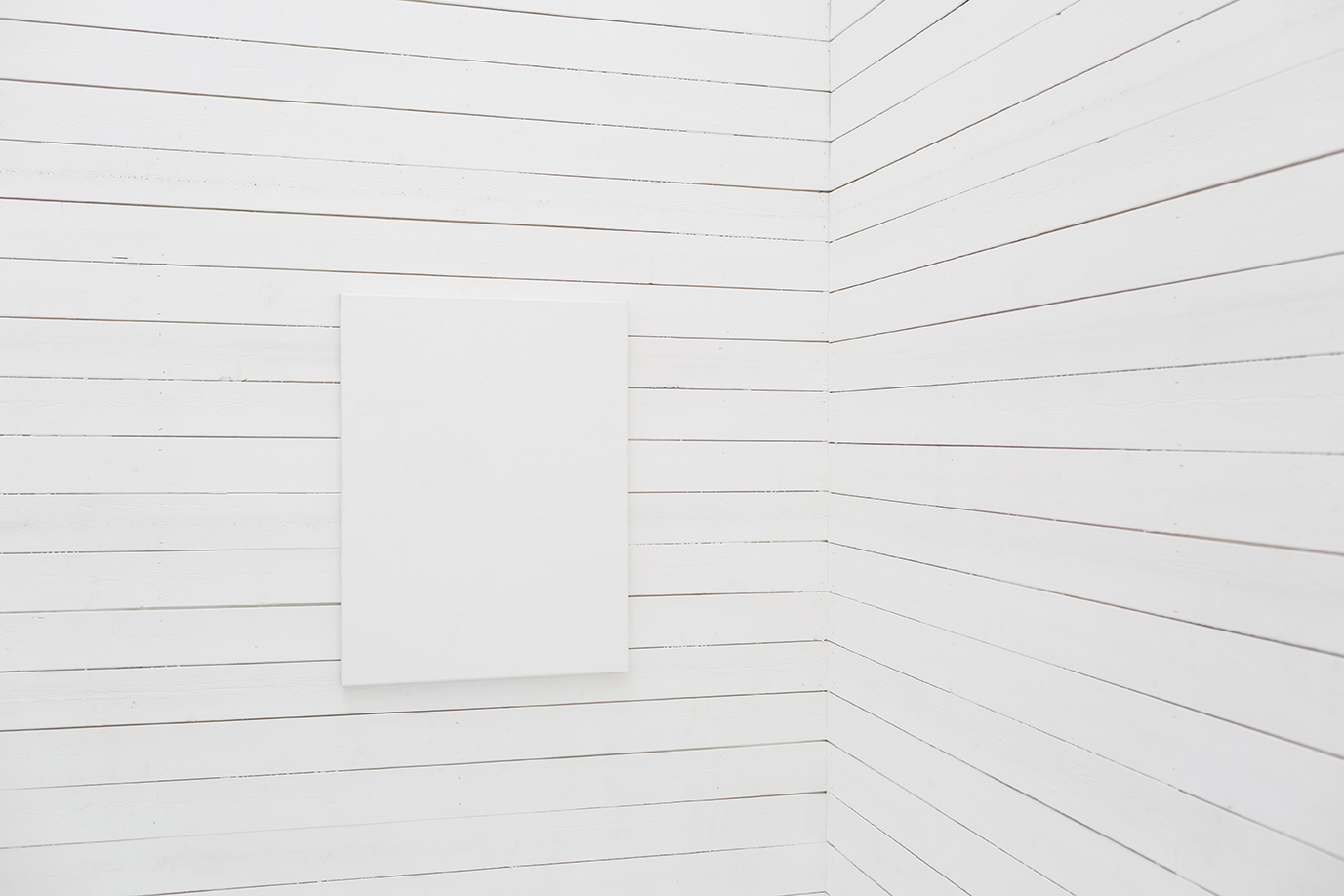Kaspars Groševs
info
DOPESMOKER
10 Minute Walk From Solitude
C.D.M.M.M.H.
White Walkers
Divdabis
Dancing Water
I didn't have wi-fi so I started to paint
Things
Exit, stuttering & nebula
427
Qu'est-ce que ça peut faire tout ça
White Tapes
A Guide to Making a Genie
00:10:00:00
H
I/O. Without Enemies
etc.
Divdabis at Latvian National Museum of Art, Rīga
Jānis Borgs and Kaspars Groševs
Curated by Andra Silapētere
5.05. - 28.05.2017.




Par idejām, laiku un palmām
Andra Silapētere
Jāni Borgu pazīstam kā spilgtu mākslas kritiķi, kura teksti lasāmi aktuālajā mākslas presē, kā arī dažādos mākslas izdevumos. Tomēr plašākai publikai mazāk zināma palikusi viņa kā mākslinieka jaunrade. Lai mazinātu šo plaisu, izstāde izceļ J. Borga radošās intereses, kas apliecina viņu kā zīmīgu konceptuālisma celmlauzi Latvijā padomju perioda apstākļos .
J. Borga interese par minimālismu aizsākās 20.gs. 60. gadu gaitā, bet par konceptuālismu 70. gados. Tomēr padomju perioda apstākļos, pastāvot cenzūrai informācijas apritē un tās pieejamībā, šādam skatījumam uz viņa darbību trūka konteksta – attiecīgas mākslas kritikas un teorijas, kas viņa darbus ļautu definēt šo virziena idejiskajā ietvarā. Tādēļ, ievērojot laikmeta noteiktos apstākļus, kas varēja būt arī dažādi praktiski iemesli, piemēram, materiālu trūkums vai tehnoloģiju nepieejamība, šajā izstādē J. Borga mākslinieciskās prakses padomju periodā nodēvējām par “nenotikušo minimālismu un konceptuālismu”. Izstāde izspēlē “nenotikušo” gan teorētiski, gan burtiski, rekonstruējot un jaunradot agrāko darbu idejas šodienā.
Divi darbi, kuri izvērš “nenotikušo”, ir 1976. gadā izstrādātais projekts – lielizmēra objekts “Enerģija” Baltijas Elektrosadales centram Šmerlī, ko diemžēl neizdevās realizēt dažādu laikmeta noteikto apstākļu ietekmē, un 1977. gada konceptuālā zīmējumu sērija “Automātiskās sekvences”, ko bija paredzēts īstenot ar datora nejaušības programmu, bet tā kā plašākai sabiedrībai Latvijā vēl nebija pieejami datori, ideja tika realizēta, izmantojot pieejamos “instrumentus”.
Savukārt Kaspars Groševs izstādei veidojis jaunus darbus, kuros savieno atšķirīgas J. Borga biogrāfijas epizodes ar savu radošo interešu diapazonu, izvēršot iespējas jaunam skatījumam uz vēstures norisēm. Darbi tematiski izspēlē padomju periodā pastāvošo cenzūru, kas tika attiecināta gan uz radošo darbu, gan pastāvēja informācijas apritē. Publikācijās bieži vien nevēlamas personas vai priekšmeti tika “izdzēsti”, lietojot tā dēvēto “palmēšanas metodi”1, proti, to vietā iegleznojot kādu “palmu”. Cenzūra izpaudās arī kā kāda mākslas darba “likvidēšana” jeb padarīšana par neeksistējošu, piemēram, to vienkārši aizkrāsojot. Pats J. Borgs virkni savu darbu, ieviesdams kārtību savā personiskajā arhīvā un pakļaudamies laikmeta slogam, nolēma iznīcināt, pieņemot, ka idejas nespēs daudzus interesēt. Šādas un līdzīgas norises K. Groševs konceptualizē, ietverot tās abstraktos objektos un gleznojumu sērijā, izvēršot jautājumus, kas skar radoša darba iespējas un lēmumus, kas tā laikā var tikt pieņemti, vienlīdz domājot par tām idejām, kas laika gaitā noput darbagalda atvilktnē, tiek aizmirstas un, izceltas atkal gaismā var iegūt jaunu jēgu.
Aicināju arī abus uzrakstīt nelielas esejas. Šeit lasāmas J. Borga pārdomas, kur meklējama ģenēze viņa interesei par konceptuālismu, kā viņa interese tika uztverta tolaik un kur nogulsnējās. Savukārt K. Groševs apraksta radošumu un lēmumus, kā arī nejaušības, kas saistīti ar to, kā katrs žests neizdzēšami atstāj pēdas laikā, lai arī katra ideja netiek realizēta.
______________________________________
About Ideas, Time and Palms
Andra Silapētere
We know Jānis Borgs as a colourful art critic whose texts can be read in current art periodicals as well as in different art publications. Meanwhile his oeuvre as an artist has remained less known to the general public. To bridge this gap, the exhibition highlights Borgs' creative interests, showing him as a notable pioneer of conceptualism in Latvian art during the Soviet period.
Borgs' interest in minimalism arose during the 1960s, but in conceptualism in the 1970s. However, under conditions of Soviet rule, with censorship of the flow and accessibility of information, such a perspective on his work lacked context – relevant art criticism and theory that would enable defining his works in the framework of these artistic movement. Thus, taking into account the conditions determined by the period, which could also include various practical reasons, such as lack of materials or access to technology, in this exhibition we call Borgs' artistic practice in the Soviet period 'unrealised conceptualism and minimalism'. The exhibition plays out the 'unrealised' both theoretically and literally by reconstructing and recreating the ideas of earlier works today.
Two works that elaborate on the 'unrealised' are the project of 1976, namely, the large-scale object Energy for the Baltic Electrical Distribution Centre in Šmerlis, which unfortunately could not be realised due to various circumstances determined by the period, and the series of conceptual drawings Automatic Sequences from 1977, which were intended to be realised using computer-generated chance, yet, since the general public in Latvia had no access to computers, the idea was realised using the available 'tools'.
Meanwhile Kaspars Groševs has created new works for the exhibition, in which he brings together disparate episodes from Borgs' biography with the range of his own creative interests, developing possibilities for a new perspective on historical processes. The works thematically play out Soviet censorship, which was applied to creative work as well as to the circulation of information. In publications, undesirable persons or objects were often erased using the so-called 'palming method'1, namely, painting a 'palm' over them. Censorship also functioned as the "liquidation", or making the work non-existent, simply by painting it over. Upon sorting out his personal archive and giving in to the weight of the times Borgs decided to destroy a string of his works, assuming that the ideas will be of no interest to many. Groševs conceptualises these and similar processes by including them in abstract objects and a series of paintings, elaborating questions related to the possibilities of creative work and decisions that can be taken in the process, simultaneously thinking about those ideas which over time gather dust in the drawer of the desk, are forgotten and can acquire new meaning, when brought to light.
I also invited both artists to write short essays. Here you can read Borgs' reflections about the genesis of his interest in conceptualism, its reception at the time and where it settled. Meanwhile Groševs describes creativity and the decisions as well as coincidences related to it, and the way each gesture leaves inerasable traces in time, even though not every idea is realised.
BEZ JAUTĀJUMA ZĪMĒM
Kaspars Groševs
Nekas mani nebiedē vairāk kā tīra, tukša, svaiga papīra lapa. Pārveļoties pirmajam apžilbumam, parādās fona trokšņi – mašīnas aiz loga, elektrības dūkoņa, bet papīrs acu priekšā atklāj savu dzimšanas vēsturi ar sīkām šķiedrām un reljefu, kas kā vēsturisku būvju Anno Domini vēlīgi norāda uz aizgājušām desmitgadēm un izcirstiem mežiem. Gluži kā centrālās nervu sistēmas tikko samanāmā sīkoņa, kas neapklust līdz pat dzīves beigām, jebkurš sākumpunkts nes sevī bagāžu un potenciālu impulsu. Savukārt beigu punkts vēl nav gals, turpinājumi var būt bezgalīgi – visa mūsu ikdiena paiet neskaitāmu turpinājumu tīklojumā, ceļojot no viena krustojuma uz nākamo. Pirms jebkura vārda ir bijuši bezgalīgi citi. Atrodot plaisas, mēs izdomājam jaunus vārdus, svešus programmām un robotiem.
Reiz vidusskolā mana glezna kļuva par sētnieka ķerras detaļu un savu turpmāko mūžu pavadīja, pārvadājot lapas. Vairākus gadus vēlāk ideja par mākslas darbu kā transportlīdzekli atgriezās. Nejaušībās zaļo nemiers. Parametri sakrīt krāvumos. Kad noskalojas putas, paliek kaili karkasi. Zem sienas krāsu slāņiem ir lauki, pludmales, meži. Aiz notīm slēpjas skaņas, kas pazudušas tulkojumā – starp sol un la var atrast vismaz 99 vārdā nenosauktas nots versijas, kuras, iespējams, nevienam nekad nenoderēs.
Plauktos noputot lietām, kas reiz likušās svarīgas, vietas paliek aizvien mazāk. Tomēr katra nošu lapa un apbružāta fotogrāfija starp krāmu kaudzēm nogulsnējas kā dubļu pamati termītu katedrālē. Kaut kam pazūdot, platības nepaliek vairāk – katrs elpas vilciens plīvo pa telpu kā asaras kosmosā. Augšstāva kaimiņu bērni svētdienas pavada dejojot, ik solim kļūstot par ēkas pagātni. “Es gribu, lai pasauli piepilda baltas, pūkainas pīlītes.” – Dereka Džārmana pēdējie vārdi.
Fantoma laika atvilktnēs vairs nav svarīgi, vai šobrīd rit 1720. vai 2017. gads, jo aizgājusī hronoloģija izirst pa vīlēm, kad jāskaita soļi. Mīcot mālus, laiks izkūst pirkstu nospiedumos un rievās. Darbi, kuru tapšanu neatceros, manās acīs vienmēr ir vērtīgāki – iespējams, tos radījis kāds cits, nevis es. Nokļuvis skatītāja lomā, es sveicu jauniegūto brīvību. Skatiens kļūst par magnētu. Vārdi izirst. Sinapsēm pamirstot, skats paveras uz mūžamežu, piesūcinātu ar pagājības plašumiem.
Rindkopā, kura izkūst kā saldējums karstā jūlija dienā, sviras un svārsti iestrēgst teikuma vidū. Sekojot sārtam pavedienam, taka pazūd acu priekšā. Laiskas rokas lokās vieglos virpuļos, it kā sekojot Villija Nindžas kustībām. Radīšanas mirkļa troksnis skan kā spalga trompete kakofoniskā svētku parādē. Ļaujot tai plosīties, pavasara sveicēji nesteidzīgi ripo līdz pat salas ragam, kuru ietin migla un neziņa par gaidāmo. Galu galā lasītāja gaidas kļūst par rakstītāja cietoksni. Atmetot cerības, košzila nekuriene saauž neprognozējamus kauliņus, kas izbiruši uz spēles laukuma. Izdzēsts nosaukums iegulst plaukstā kā arheoloģisks darbarīks, kura funkcija pazudusi līdz ar tā darinātāju.
Izdzēstās dvesmas kā holesterīna izgulsnes nosēžas patvaļīgās atmiņas kambaros, plīvojot līdzi laikam, līdz tās aprij aizspogulijas tumsa. Raušenberga izdzēstais de Kūninga zīmējums kļuva par ko vairāk, nevis mazāk, un, gadiem ritot, tā vieliskums tikai nobriest kā labs beļģu raugs Burgoņas hercogienes vārdā nosauktajā alū. Savukārt sevis izdzēšana, iespējams, nozīmē atzītu sakāvi. Tikpat liela ir varbūtība, ka tas ir solidārs žests tukšo sienu virzienā, kuras pieklusināti vaicā – kā tālāk? Jautājuma zīme gan ir lieka, jo “nekas nepāriet (tikai tas, kas garām iet)”. Daži nepazīst pieturzīmes.
______________________________________
WITHOUT QUESTION MARKS
Kaspars Groševs
Nothing scares me more than a clean, blank, fresh sheet of paper. Flipping over the initial dazzlement, background noises appear – cars outside the window, the hum of electricity, while the paper in front of the eyes reveals the history of its making with tiny fibres and texture, which, similar to the Anno Domini of historical buildings, kindly points to decades past and forests cut. Just like the barely perceptible whining of the central nervous system, which does not go quiet till the end of life, each point of origin carries in itself luggage and a potential impulse. Meanwhile the end point is not nearly the end, continuations can be endless – our daily life passes entirely within the network of countless continuations, traveling from one intersection to the next. Each word has been preceded by countless others. On finding gaps, we come up with new words, foreign to programmes and robots.
Once in high school, a painting of mine became a part of the cleaner's barrow and spent the rest of its life transporting leaves. Many years later, the idea of a work of art as a means of transport returned. Restlessness blooms in coincidences. Parameters fall into heaps. When the foam washes away, bare carcasses remain. Below the layers of wall painting there are fields, beaches, forests. Sounds lost in translation hide behind the notes– between G and A there are at least 99 unnamed versions of the note which may never be of use to anyone.
With dust gathering on shelves of things that used to seem important, there is ever less space. Yet each sheet of music and worn photograph settles among the piles of stuff like the mud fundament of a termite cathedral. The disappearance of something does not provide more space – each breath floats around the room like tears in the cosmos. The children of the upstairs neighbours spend their Sundays dancing, with every step becoming part of the building's past. “I want the world to be filled with white fluffy duckies.” – the last words of Derek Jarman.
In the drawers of phantom time it is of no significance, whether this is year 1720 or 2017, since past chronology unravels along the seams when steps must be counted. While moulding clay, time melts into fingerprints and creases. The works, whose making I do not remember, in my eyes are more valuable – possibly they have been made by someone other than me. Finding myself in the role of the viewer, I greet the newfound freedom. The look becomes a magnet. Words unravel. With synapses failing, the look turns to the eternal forest, infused with the breadths of the past.
In the paragraph which melts like an ice-cream on a hot July day levers and pendulums get stuck in the middle of the sentence. Following a red thread, the path disappears in front of the eyes. Idle arms curve in soft whirls, as though following the moves of Willi Ninja. The noise of the moment of creation sounds as a shrill trumpet in a cacophonous festive parade. Letting it rage, the greeters of spring roll unhurriedly till the horn of the island, enveloped in fog and uncertainty about the things to come. In the end, the expectations of the reader turn into the fortress of the writer. Giving up hope, a bright blue nowhere weaves together unpredictable pieces which have spilled onto the gameboard. An erased title fits in the palm as an archaeologic instrument, whose function has been lost along with its maker.
The erased breaths settle like cholesterol deposits in chambers of wilful memory, fluttering in time, until they are swallowed by the darkness of the other side of the mirror. Rauschenberg's erased de Kooning drawing became something more, not less, and with years its materiality ferments like a good Belgian yeast in the bear named after the Duchess of Bourgogne. Meanwhile, erasure of self, probably means an admitted defeat. It is equally likely, that it is a gesture of solidarity towards the empty walls, which inquire quietly – what next? The question mark is unnecessary though, since “nothing passes (only that, which passes by)”. Some are not familiar with punctuation.
Curated:
Fat Gnomes (Ears
of New Jersey)
Retrospect 1996-1999
I had an amnesia once or twice
A Very Small Window
Demons and Ashes
Luksafors
Different Room
Autonomia
Old Man Goes Home
Blue Lagoon House